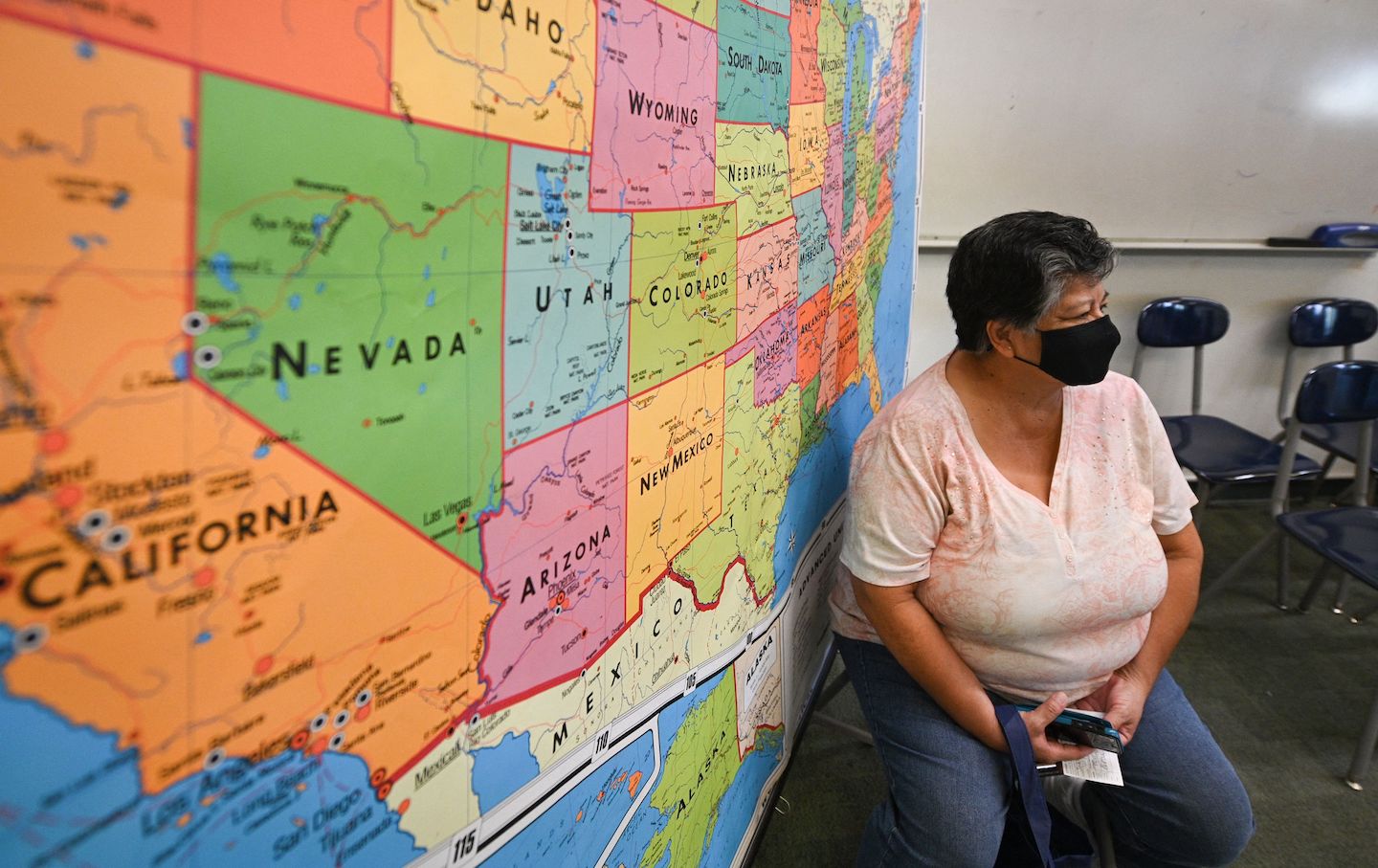
A patient waits to receive a dose of the Covid-19 vaccine at a LA Care Health Plan vaccination clinic.(Photo by Robyn Beck / AFP)
Millions of low-income Americans are at risk of suddenly losing health coverage when the federal government’s years-long public health emergency declaration expires. The Biden administration extended the coronavirus emergency declaration in April, pushing the expiration of the emergency measures to mid-July. Many public health experts and officials expect the recent renewal to be the final one, urging states to take steps to prepare for the end of these emergency pandemic measures and to bolster public health infrastructure to protect the most vulnerable.
Nearly 16 million Americans are projected to lose health coverage if the emergency declaration ends in the fall, and 14.4 million people if the measures end midsummer, according to estimates from the Urban Institute, a Washington think tank. The emergency declaration, which was first implemented under President Donald Trump in early 2020, provided waivers to expand Medicaid and Medicare telehealth coverage, prohibited restrictive Medicaid eligibility requirements, and gave states the temporary ability to quickly implement changes to Medicaid and the Children’s Health Insurance Program (CHIP), among other policies.
“To be realistic, at some point the federal government is going to have to scale some of these things back, and we’re wanting to be cautious that we don’t pull things back too soon because although people are ready for the pandemic to be over, I don’t know that it is,” said Dr. Marcus Plescia, the chief medical officer of the Association of State and Territorial Health Officials.
If the Biden administration doesn’t extend the public health emergency, these measures will expire on the same day, or right after. The Department of Health and Human services has promised to give states at least two months’ warning before making changes to the declaration to give them a chance to prepare for the disruptions, but more than a dozen Democratic state governors have said they would need more time. Pandemic-era policy changes have led to a significant increase in Medicaid and CHIP enrollment, by over 20 percent from February 2020 to November 2021. Plescia added that states can expand Medicaid programs on their own but should start trying to make those regulatory changes now because the process is a lengthy and political one.
“Eventually, we’re probably going to transition back to a situation where all of the Covid treatments, testing, and vaccination all go back to our standard system, which is you know, it’s paid through various health insurance systems and that’s why the emergency authorizations around Medicare and Medicaid are so important,” Plescia said. “If we transition away from the government just augmenting payment for some of these things, we’re going to be back to needing to look at the problem that we still have a significant portion of people in the country who don’t have health insurance.”
Republicans, meanwhile, continue to call on the White House to end the Covid-19 public health emergency designation, saying the administration should end its “overbearing and authoritarian” approach. “We call on your administration to do what so many states and other countries already have: accept that COVID-19 is endemic, recognize that current heavy-handed government interventions are doing more harm than good, and immediately begin the process by which we unwind the PHE so our country can get back to normal,” more than 70 House Republicans wrote in a letter to the administration in February.
The White House had initially requested $22.5 billion in pandemic aid from Congress. Lawmakers stripped the money from a broader must-pass spending bill, and went on to cut the amount in half in hopes of reaching a bipartisan deal. But the scaled-back $10 billion package fell apart right before the Easter break when Republicans demanded a vote on Title 42, a Trump-era public health order that the Biden administration has been using to expel migrants seeking asylum at the border.
Uncertainties around federal funding for Covid-19 treatment, testing, and vaccines also complicate states’ preparation for the transition to the next phase of the pandemic. “It’s causing a crisis right now,” Plescia said. Congressional inaction has already forced clinics and health centers across the country to cut or dramatically restrict Covid-19 care for uninsured patients, as funding runs dry amid a new wave of infections and hospitalizations. As of April 20, the seven-day moving average of daily new cases increased by 35 percent compared to the previous week’s average of daily new cases, according to the Centers for Disease Control and Prevention.
Aída ChávezTwitterAída Chávez is communications director and policy adviser at Just Foreign Policy. She was previously The Nation’s D.C. correspondent and a reporter at The Intercept, More Perfect Union, and other outlets.